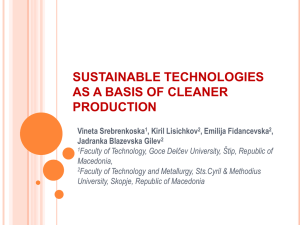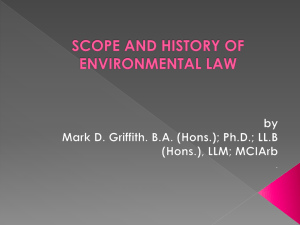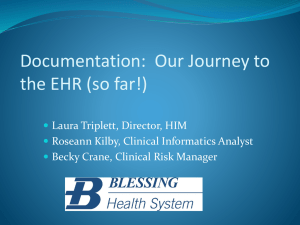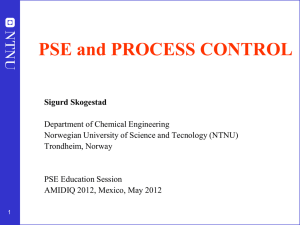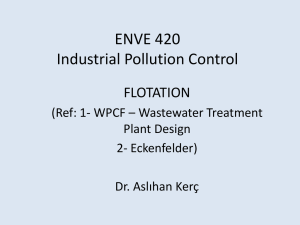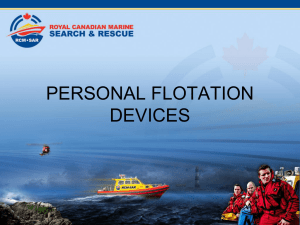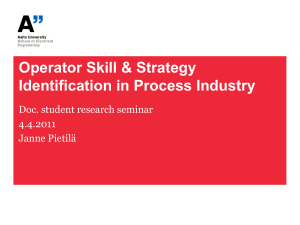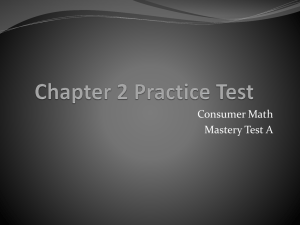Asmara North Feasibility Study - Vancouver Island Exploration Group
advertisement
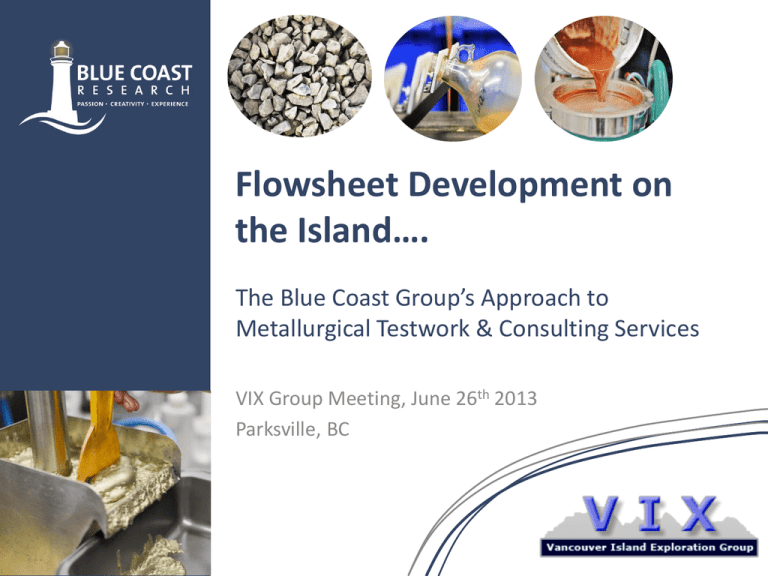
Flowsheet Development on the Island…. The Blue Coast Group’s Approach to Metallurgical Testwork & Consulting Services VIX Group Meeting, June 26th 2013 Parksville, BC Informal Agenda › 7:00pm – Meet & Greet, Refreshments. › 7:30pm – Introduction & Presentation by Dave Middleditch. › 8:00pm – Tour of Mineral Processing Lab & Practical Demonstration of Flotation & Superpanner/MAT table. › 8:30pm – Tour of Analytical Lab (Fire Assay & Wet Chemistry). › All times are approximate! › Location of washrooms and fire escapes… Prospecting to Production > The main steps… simplified.. Prospecting (10,000+) Drilling (1,000+) Economic Evaluation More Drilling… Production (10+) Construction & Commissioning Financing More Evaluation… (100+) Economic Evaluation › What do you need for a Positive economic evaluation? › A good Resource (sufficient drilling, accurate block model etc…) › A workable and economic Mining Method (open pit, underground cut and fill etc…) › A viable Process that recovers the valuable minerals into saleable products. › Need to show a Positive Net Present Value (NPV) to the potential shareholders/investors. › High metal prices and a favourable, mining friendly jurisdiction help but are not prerequisites for success… › TEAMWORK – A project needs good Geologists, Mining Engineers and Metallurgists to realise its full potential.. › Most mining companies rely on consultants and service providers to provide the majority of the project team members… Who Are Blue Coast? › A group of Metallurgists, Mineralogists, Technicians & Administrative personnel focused on providing mining companies with the optimum mineral processing flowsheet for their project. › Greenfield and brownfield development projects specialising in base metals and gold › Also provide “Plant Support” to existing operations around the world › Projects are located across the globe but our clients are predominantly Vancouver or Toronto based… The Blue Coast Group Est. 2011 Met Testwork Fire Assaying Wet Chemistry ~15 Employees Est. 2008 Met Consulting Flowsheet Development Project Management Plant Support ~4 Employees Metallurgical Testwork > Why go to the trouble? › Assess and Evaluate the most appropriate processing technologies – All orebodies are unique! › Define the metallurgical grade and recovery projections – Ever increasing confidence required from PEA up to Detailed Engineering… › Reduce Risk – Technological risk as well as the risk of inaccurate numbers. › Optimise or refine existing flowsheets or operations – Sometimes projects get to production with the “wrong” flowsheet… › Compliance with NI-43101 Standards – Qualified Persons in high demand. 43-101 guidelines for metallurgical testwork are under review and will get tighter. Blue Coast respected name in the issuance of 43-101 compliant metallurgy Metallurgical Testwork > First Steps… › Sample Selection: Spatially representative, grade representative, lithologically representative, Master Composite(s), variability composites… › Head Characterisation: Assays & trace element scans. › Mineralogy: Automated mineralogy (QEMSCAN) is best for base metals. Optical/DSIMS best for gold for visible/refractory gold respectively. › Best done by Geologists working with Metallurgists… Mineralogical Analysis > QEMSCAN › QEMSCAN = Quantitative Evaluation of Minerals by Scanning Electron Microscope › Hundreds of thousands of particles measured in one specimen › SEM combined with X-Ray (EDS) locates and identifies minerals to provide: › Modal Abundance › Mineral Liberation Data › Association Data (what type of gangue is attached to your chalcopyrite?) › Deportment (if mineral compositions are known – can be measured or assumed) Mineralogical Analysis > QEMSCAN 100 90 80 70 Mineral Abundance (wt.%) 60 50 40 30 20 10 0 EDPCuZn VAR1 EDPCuZn VAR2 EDPCuZn VAR3 EDPCuZn VAR4 EDPCuZn VAR5 EDPCuZn VAR6 EDPCuZn VAR7 Chalcopyrite Bornite Enargite Covellite Chalcocite Cu Textures Pyrite Sphalerite Pyrrhotite Galena Quartz Amphiboles Feldspar Epidote Other Silicates Barite Carbonates Kaolinite Mica Chlorite Fe Oxides Other Mineralogical Analysis > QEMSCAN Elemental Deportment (Mass % Cu) 100 90 80 70 Mass (% Cu) 60 Cu Textures Chalcocite 50 Covellite Bornite Chalcopyrite 40 30 20 10 0 EDPCuZn VAR1 EDPCuZn VAR2 EDPCuZn VAR3 EDPCuZn VAR4 EDPCuZn VAR5 EDPCuZn VAR6 EDPCuZn VAR7 Metallurgical Testwork > Flowsheet Selection › What flowsheet is the most appropriate? › Experience with similar projects? › Industry standard › Although no two orebodies are ever the same, the optimum process will ultimately share features and characteristics with similar orebodies. › For example, if testing a greenfield BC copper porphyry new discovery with straightforward mineralogy a good place to start would be the flowsheet used at Teck’s Highland Valley Copper operation. Metallurgical Testwork > Flowsheet Selection – Copper Porphyry › What primary grind?, what regrind?, collector dose? Residence time? Number of stages of cleaning? Is gold recovery important etc..? Rougher Primary Grind p80 = 130 microns Rougher Tail Regrind (mild steel) p80 = 25 microns Cleaner 1 Cleaner 1 Scavenger Cleaner Scav Tail Final Product Recirculating Stream Cleaner 2 Tail Cleaner Scav Conc Cleaner 2 Cleaner 3 Tail Cleaner 3 Cleaner 3 (Final) Concentrate Metallurgical Testwork > Flowsheet Selection – Polymetallic › What primary grind?, what regrind?, collector dose? Zinc depressant dosage? Ability to produce separate and saleable copper and zinc concentrates? Copper Rougher Flotation Zinc Rougher Flotation Final Tails Primary Grind p80 = 70µm Copper Regrind p80 = TBDµm Zinc Regrind p80 = 28µm Zinc Cleaner 1 Flotation Copper Cleaner 1 Flotation Copper Cleaner 2 Flotation Copper Cleaner 2 Flotation (req'd for low Cu head grades) Zinc Cleaner 2 Flotation Zinc Cleaner 3 Flotation Final Copper Concentrate Final Zinc Concentrate Metallurgical Testwork > Flowsheet Selection – Gold › Gravity, flotation & leaching are the main process options for gold recovery. Which one, or which combination is the most appropriate? › GRG gold? Fine grained associated with pyrite? Refractory? › Can a high grade gravity conc be produced? › At what grind are we able to achieve GRG recovery? › Can we float pyrite hosted gold into a flotation concentrate? › When leached, is the gold recovered from concentrate? What CN concentration is required? Is whole ore leaching more appropriate? › If gold is refractory, other processing options can be considered – POX, BiOX, roasting etc… Need to produce economic feeds for these processes as they are expensive to operate. Metallurgical Testwork > Comminution › World’s Largest SAG Mill – Kansanshi Copper Mine, Zambia › 40’x29’, 28MW › 130,000 tpd throughput › Millions of $$ CAPEX – success of the whole operation relies on correctly sized crushing and grinding circuits. › Need to do testwork on representative samples in order to conduct proper circuit design. › Variability must be considered › Bwi, Rwi, SMC, JK Dropweight, Cwi, Ai, Macpherson Test etc… Metallurgical Testwork > Flowsheet Selection Tools › Batch Flotation Tests (rougher & cleaner) › Locked Cycle Tests (flotation) inc. full element scans of concentrates (ICP). › Bottle roll cyanidation tests (gold/silver leaching) – CIL, heap leach etc… › E-GRG and GRG tests (gravity recovery) › Bond Ball Work Index Testing › Assaying – wet chemistry and fire assay done in house › Associated sample prep – crushing, blending, sizing, bucking etc… › Interpretation – BCR personnel have worked on 100s of projects over many years in the lab and in plant operations. Analytical Services > Wet Chemistry & Fire Assay › Integrated assay laboratory geared towards metallurgical testwork assays › Fire Assay (gold and silver) & Wet Chemistry (base metals and silver by AR/4A with AA finish) › Relatively low volume but high quality › Quick TAT – 24 hour base metals, 48 hour gold assays › Participate in SMA round robin program (30 labs in total participating) › Rigorous internal QA/QC program. BCR + 3 External Commercial Labs (SGS Lakefield, Actlabs, Florin Analytical) Metallurgical Testwork > How much is enough? › Tradeoff between risk mitigation & $$ spent on testing › Is it possible to remove All process risk? Yes, but… it would be a very expensive testing program! › Is it possible to do met testwork cheaply? Yes, but… the potential for process risk would likely be higher. › Value for money is the key. Reduced Risk Pre- Scoping Scoping Study/PEA Prefeasibility Study Feasibility Study Detailed Design & Engineering Metallurgical Testwork > How much is enough? Level Sample Representivity Pre-Scoping Best sample available at time Scoping Study/PEA Prefeasibility Study Feasibility Study Detailed Design Effort made to match average resource grade & spatial representivity Multiple drill holes, spatial variability samples, reasonable coverage of various zones Absolute confidence in samples required. Thorough coverage of all zones and variability As needed – focus on specific zones if required Sample Mass (Kg) 10-15Kg 50kg 200kg 2000kg +10000kg for Pilot Plant Mineralogy Hardness Yes – Basic Optical study on MC Flotation Testing Variability 2-3 Batch Tests Master Comp Yes – QEMSCAN size by size on MC Yes – Basic BWi/RWi 10+ Batch Tests + LCT Main Zone Master Comps Yes – QEMSCAN variability study & MC(s) Yes – full circuit plus variability 50+ Batch Tests + multiple LCTs Main Zones + Variability Comps Yes – QEMSCAN variability study & MC(s) Yes – JK tests, JK model, power based design 100+ Batch Tests + multiple LCTs Main Zones + Variability Comps + blend tests Yes – if not completed prior Check design – third party review Confirmatory Not Required Pilot Plant Case Studies > The cost of getting it wrong… › CASE STUDY A – Vancouver Based Junior, polymetallic project, East Africa › Prior to BCM involvement the company contracted a Vancouver based testwork lab to perform scoping level metallurgical testwork. › Company needed favourable results form program in order to make “go forward” decision on the project before relinquishing property to the government. › Polymetallic orebody – complex metallurgy but easily workable using the correct process flowsheet. › 2008/2009 lab testwork program (~$150k) failed to produce saleable products at economically viable recoveries. › Company sought second opinion on testwork program from BCM (Chris Martin) due success of similar project in the same country. › Testwork repeated at different met lab with conventional flowsheet. › 2013 – Company completes positive feasibility study. NPV of $692 million › Financing & construction expected in 2014 – Blue Coast still involved… Case Studies > The cost of getting it wrong… › CASE STUDY B – PGM Operation, Ontario › Mill expansion in 2001 › SAG mill undersized by 40% - Pebble crusher had to be installed after the fact… extra CAPEX › Flowsheet developed proved unworkable requiring complete change on startup › Initial losses were ~-15% in Pt+Pd recovery › After optimisation losses were still ~-5% recovery Analytical Services > Proposed Geochem Fee Schedule › Based on batches of >100 samples* › Package 1 (Cu, Pb, Zn, Fe, Ni, Co) = $19.00 for first element +$4.50/additional element › Package 2 (As, Ag) = $22.50 for first element +$4.50/additional element › Au Fire Assay (30g fusion) = $19.50/sample › Au/Ag Fire Assay (30g fusion) = $29.50/sample › Crushing of core (<1500g) = $7.50/sample › Pulverising of ~200g Subsample to 75µm = $6.00/sample › TAT = 2-3 Days for Base Metals, 3-4 Days for Gold. (Less 24 hours if prep is not required) › Exclusive to VIX Group Members/local prospectors and developers › Batches <100 samples refer to metallurgical price list Questions/Comments? “Thank you for your attention…”
